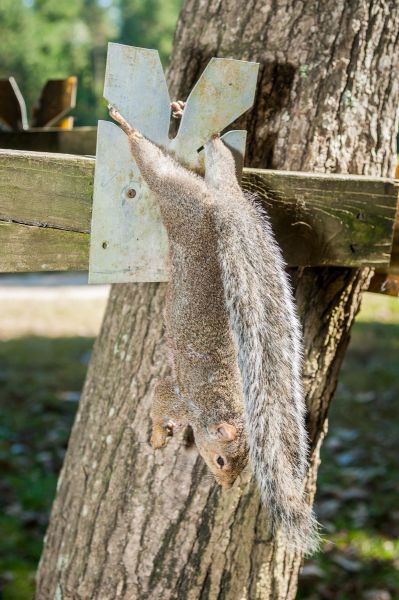As an avid hunter and outdoor enthusiast, I\’ve learned that preparing wild game like squirrel can be just as rewarding as the hunt itself. Today, I\’ll guide you through the process of cleaning a squirrel, transforming it from forest critter to tasty table fare. This skill is essential for any air gun hunter looking to make the most of their harvest.
Why Clean Your Own Squirrel?

Before we dive into the nitty-gritty, let\’s talk about why cleaning your own squirrel is worth the effort. First off, it connects you more deeply to your food source and the hunting experience. There\’s something profoundly satisfying about handling every step from field to fork. Plus, you\’ll ensure the meat is processed to your standards, maximizing quality and freshness.
Essential Tools for the Job
To clean a squirrel effectively, you\’ll need a few basic tools:
- A sharp, sturdy knife
- Clean water source
- Cutting board or flat surface
- Gloves (optional, but recommended)
- Garbage bag for discarding waste
Now, let\’s get down to business!
Step-by-Step Squirrel Cleaning Guide

1. Prepare Your Workspace
Set up in a well-ventilated area, preferably outdoors. Lay out your tools and ensure you have a clean water source nearby. This could be a hose, bucket of water, or even a running stream if you\’re still in the field.
2. Wet the Squirrel
Thoroughly wet the squirrel\’s fur. This might seem counterintuitive, but trust me, it makes the next steps much easier by preventing loose hairs from sticking to the meat.
3. Start with the Tail
Locate the base of the tail and make a shallow cut through the skin, being careful not to sever the tailbone. This incision should be just deep enough to separate the skin from the underlying muscle.
4. Create Your Initial Cuts
With the squirrel on its back, make a small incision at the base of the tail, then extend this cut about an inch towards the head. Next, make angled cuts from this line towards each hind leg.
5. The “Step and Pull” Technique
Here\’s where the magic happens. Place the squirrel\’s hind feet on a sturdy surface and step on them (yes, really). Grab the tail with one hand and the loose skin at the incision with the other. Pull firmly towards the head. If done correctly, the hide should peel away cleanly.
6. Remove the Remaining Hide
Continue pulling the hide towards the head, exposing the front legs. You may need to use your knife to carefully free the legs from the hide. Once you reach the head, simply cut it off along with the feet.
7. Evisceration
Make a shallow cut along the belly from between the hind legs to the ribcage. Be extremely careful not to puncture the internal organs. Reach in and remove all the innards, being thorough but gentle.
8. Final Cleaning
Rinse the carcass thoroughly with clean water, removing any remaining hair or debris. Pat dry with paper towels.
From Forest to Feast: Cooking Your Squirrel

Now that you\’ve successfully cleaned your squirrel, it\’s time for the best part – eating it! Here are a few of my favorite ways to prepare squirrel:
-
Classic Fried Squirrel: Dredge pieces in seasoned flour and fry until golden brown. Serve with biscuits and gravy for a true Southern treat.
-
Slow-Cooker Squirrel and Dumplings: Perfect for tougher, older squirrels. The long, slow cooking process tenderizes the meat beautifully.
-
Squirrel Pot Pie: Remove the meat from the bones and use it in your favorite pot pie recipe. The rich, gamey flavor works wonderfully with creamy sauce and flaky crust.
Remember, squirrel meat is lean, so be careful not to overcook it. A little extra moisture in your recipes can go a long way in keeping the meat tender and juicy.
Cleaning and cooking your own squirrel might seem daunting at first, but with practice, it becomes second nature. Not only does it provide a delicious and sustainable meal, but it also deepens your connection to the hunting experience and the natural world.
I\’d love to hear about your experiences cleaning and cooking squirrel. Drop a comment below or share this article with your fellow hunters. And if you\’re looking for more hunting and air gun tips, be sure to check out our other articles on Air Gun Maniac. Happy hunting and bon appétit!






![Air gun 101: The differences between .177 & .22 – Which jobs they do best ? [Infographic]](https://airgunmaniac.com/wp-content/uploads/2020/09/g44-218x150.jpg)








































